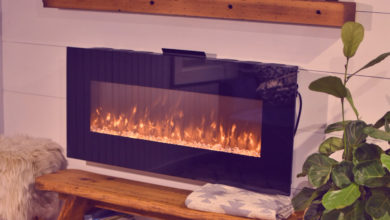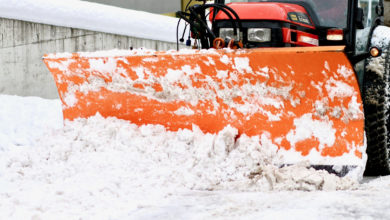Shoveling fluffy snow of a driveway in chilling winters is often a dreaded task and particularly dangerous considering the potential injuries and other health risks. Clearing off snow from the driveway in winters is probably not how most of us would want to spend our time on.
If you have restricted mobility and have no kids in the neighborhood who are keen to make some extra money by wielding a shovel to clear off snow from the property, installing a heated driveway is the best choice. It not only ensures warm driveway pavers, safe passage to and from your home but also saves your time, money and hassles of firing up a snowblower and purchasing expensive snow equipment. Such driveways also minimize the requirement for using salt or other snow-removal chemicals on the driveway, thereby eliminating the damage that the driveway absorbs.
How do the heated driveways work?
The heated driveways are basically the radiant floor heating systems.
The heating systems are of two types:
- One is the electric current heating system in which a mat of wires is embedded beneath the surface of the driveway and an electric current is used to produce heat across the mat. This heating system is very powerful, which normally reaches a temperature of over 93.33° C and produces as much as 50 Watts of electricity per linear foot of coil.
- The second method is the use of several tubes and pumps to trigger movement of hot water directly beneath the driveway, warming it up.
Heated driveway costs around $120 to $250 (energy charges) every winter to melt snow off a 1,000 square foot driveway. It should be installed at least thirty days before the arrival of winter. usually costs
Once the heating system is turned on from the comfort of your room, the pavement gets heated and the snow starts melting. With heated driveways, you are able to keep snow off the walking surfaces with least effort.
Heated driveway costs and their worth
Typically, a heated driveway cost lies in the range of $1,300 – $7,500. On average, the heated driveway cost and installation are $8,594 for the heating system under asphalt and $7,543 under concrete.
Installing a heated driveway is a huge investment. However, looking at the convenience, time savings and the labor reduction and long-term benefits, it is definitely worth the cost.
Here you can see how to install a heated driveway:
Moreover, there are several smart ways that can be considered to reduce the cost which has been discussed below.
Benefits of heated driveways
Heated driveways are rising in popularity as an amenity that could take the snow shovel out of your hand and mitigate the cost of paying for professional snow-plow services. It is an expensive affair but the benefits far outweigh the costs.
- Heated driveways prevent ice accumulation during freezing and chilling nights. Such driveways eliminate the need to use rock salt (Sodium Chloride) or other deicers on the driveway, greatly preventing the acceleration of the salt corrosion on vehicle undercarriages. Installing a heated snow melting system extends the life of your driveway. It eliminates the need for snow plows and heavy trucks that eventually scrape and damage your yard. Heated driveways also prevent the rock salt from burning nearby grass, plants, and flowers planted near the edges of your driveway.
- Snow shoveling often causes slip-and-fall accidents, ligament sprain, frostbite or hypothermia. It also increases the risk of heart attack and other injuries. The automated systems help to minimize the health risks, personal injuries and subsequent litigation associated with being out to clear snow in your parking areas and driveways.
- Typically, once the heated driveways are installed, there is normally no or very little maintenance required. Everything can be operated from a simple switch, and automatic ease can make even flipping the switch unneeded. As long as the heating elements are arranged evenly, no sharp stones were used when the driveway was installed, there should be itsy-bitsy if any servicing and operational costs. You can enjoy the benefits for many years with no expenses for managing and retaining a snowplow or paying for clearing your yard and purchasing bag after bag of deicers.
How to save on the costs of heated driveways?
- If installing a heated driveway is out of your budget, portable heated mats may be a good alternative. Heated mats can be placed over your yards, sidewalks, driveway, stairs and even the entrances where you don’t want to shovel the snow. Prices of the heated mats vary depending on the size of the mat, with bigger mats costing around $1,000.
- If you already have an existing concrete driveway, it can be retrofitted to your existing area and converted to a heated driveway fairly easily. A retrofit installation is done by cutting your concrete and adding a snow melting system to your pre-existing driveway. Sealing the seams make it look as good as new.
- If you can manage to rent a jackhammer and a sledgehammer, busting up the old pavement and hauling it off yourself saves on the demolition costs. This reduces the heated driveway cost.
- Driveway heating systems can be installed underneath any driveway surface, including the patios, decks, yards, pavements, and sidewalks. Before installing, it is recommended to take an opinion from a professional to get estimates/accurate bids, type of heated driveway to be installed and the possibility of upgrading the pre-existing driveway by a retrofit installation that saves a huge amount on the total cost of the installation of a heated driveway.
With snow melting systems easing the task of shoveling, more and more people are installing heated driveways as the traditional method of dealing with ice is time-consuming, taxing and costly as well. The expense of installation can be very high, considering the overall heated driveway cost. However, with the present-day advancements in technology, a snow melting heated driveway is not as pricey it used to be a decade ago. The immediate and long-term advantages outweigh the expenses.





